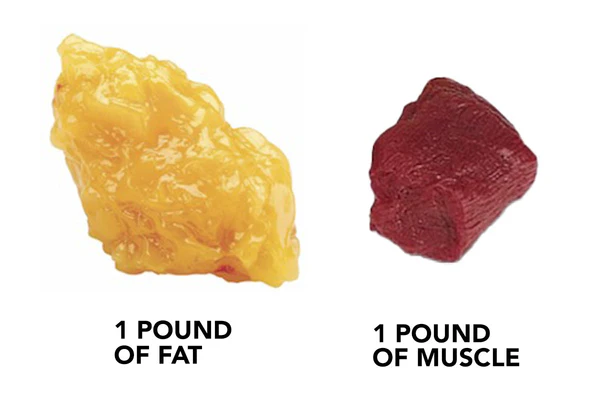When it comes to fitness and body transformation, myths and misconceptions run rampant. One of the most persistent falsehoods is the idea that fat can turn into muscle—or vice versa. This misunderstanding can lead to ineffective workout routines, unrealistic expectations, and frustration.
In this blog, we’ll break down the science behind fat loss and muscle gain, explain why fat cannot transform into muscle, and provide actionable tips for improving your body composition the right way.

Myth #1: Fat Can Turn Into Muscle (Or Muscle Into Fat)
The Short Answer: No, They Are Two Completely Different Tissues
Fat (adipose tissue) and muscle (skeletal muscle tissue) are biologically distinct. They serve different functions, have different structures, and cannot magically convert into one another.
- Fat is stored energy, made up of triglycerides in fat cells (adipocytes).
- Muscle is metabolically active tissue made of protein filaments (actin and myosin) that contract to produce movement.
When you lose fat, your body breaks down triglycerides for energy. When you gain muscle, your body synthesizes new proteins through resistance training and proper nutrition. These are separate processes—one does not become the other.
Why Do People Believe This Myth?
The confusion likely comes from seeing people go from a "softer" appearance (higher body fat) to a "toned" look (lower fat, more muscle). Since the body changes shape, it *seems* like fat is turning into muscle—but in reality, two different things are happening:
1. Fat loss (reducing stored triglycerides)
2. Muscle growth (increasing muscle fiber size)
Myth #2: You Can ‘Spot Reduce’ Fat from Specific Areas
Another common misconception is that you can burn fat from just one area (like the belly or thighs) by doing targeted exercises (e.g., endless crunches for abs). Unfortunately,spot reduction is a myth.
How Fat Loss Actually Works
When your body burns fat for energy, it pulls from fat stores all over—not just the area you’re working. Genetics largely determine where you lose fat first.
- What Helps? A calorie deficit (burning more than you consume) combined with strength training and cardio.
- What Doesn’t? Doing 1,000 sit-ups a day won’t magically melt belly fat if your overall body fat percentage stays high.
Myth #3: The Scale Tells the Whole Story
Many people fixate on weight, but **body composition is far more important**. Two people can weigh the same but look completely different based on their muscle-to-fat ratio.
Why Body Composition Matters More Than Weight
- Muscle is denser than fat (takes up less space).
- Gaining muscle while losing fat can make the scale stay the same—but you’ll look leaner and fitter.
- A body composition analyzer (like ours!) gives a true picture of progress by tracking muscle mass, fat %, and water weight.
How to Actually Improve Body Composition
Since fat doesn’t turn into muscle, you need a dual approach:
1. Lose Fat (Through Nutrition & Cardio)
- Calorie deficit (burn more than you eat)
- High-protein diet (preserves muscle while losing fat)
- HIIT & steady-state cardio (boosts fat burning)
2. Build Muscle (Through Strength Training)
- Progressive overload (lifting heavier over time)
- Compound lifts (squats, deadlifts, bench press)
- Adequate protein intake (~1g per pound of body weight)
3. Track Progress the Right Way
- Use a body composition analyzer (not just a scale)
- Take progress photos & measurements
- Monitor strength gains(if you’re getting stronger, you’re likely gaining muscle)
Final Thoughts: Fat Loss & Muscle Gain Are Separate (But Possible Together!)
The idea that fat turns into muscle is a myth, but the good news is that you can lose fat and build muscle simultaneously—especially as a beginner or when returning to training. The key is:
✔ Strength training to build muscle
✔ Proper nutrition to fuel fat loss
✔ Tracking body composition (not just weight)
By understanding how your body really changes, you can set realistic goals and make measurable progress.
Need an accurate way to track your body fat and muscle changes? Our [Body Composition Analyzer] gives you precise insights so you can train smarter. [Try it today!]
 Hot News
Hot News2024-12-16
2024-11-21
2024-10-17
2024-09-06
2024-01-24
2024-01-10